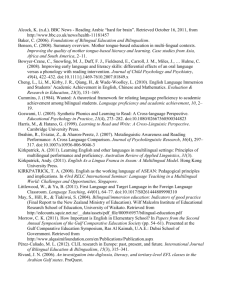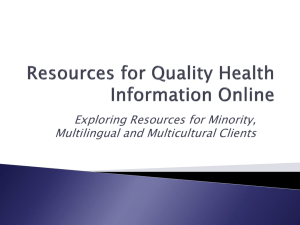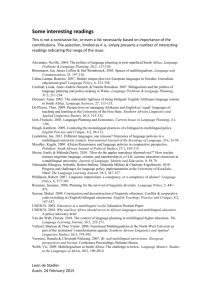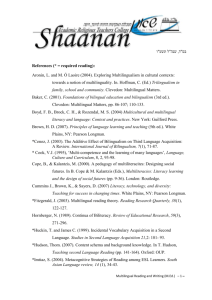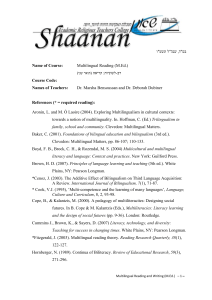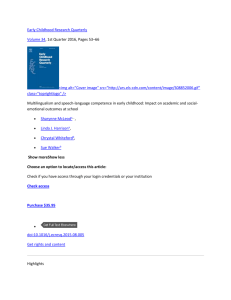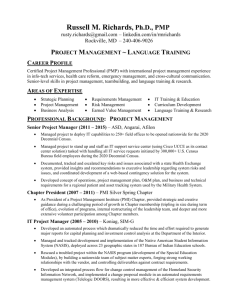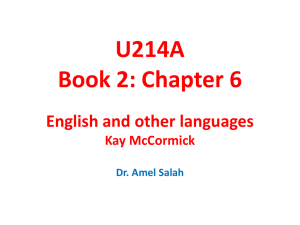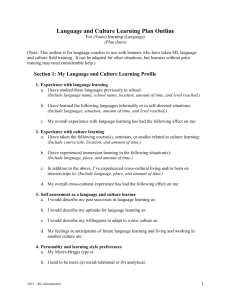References and Notes Indigenous Literacy Development
advertisement
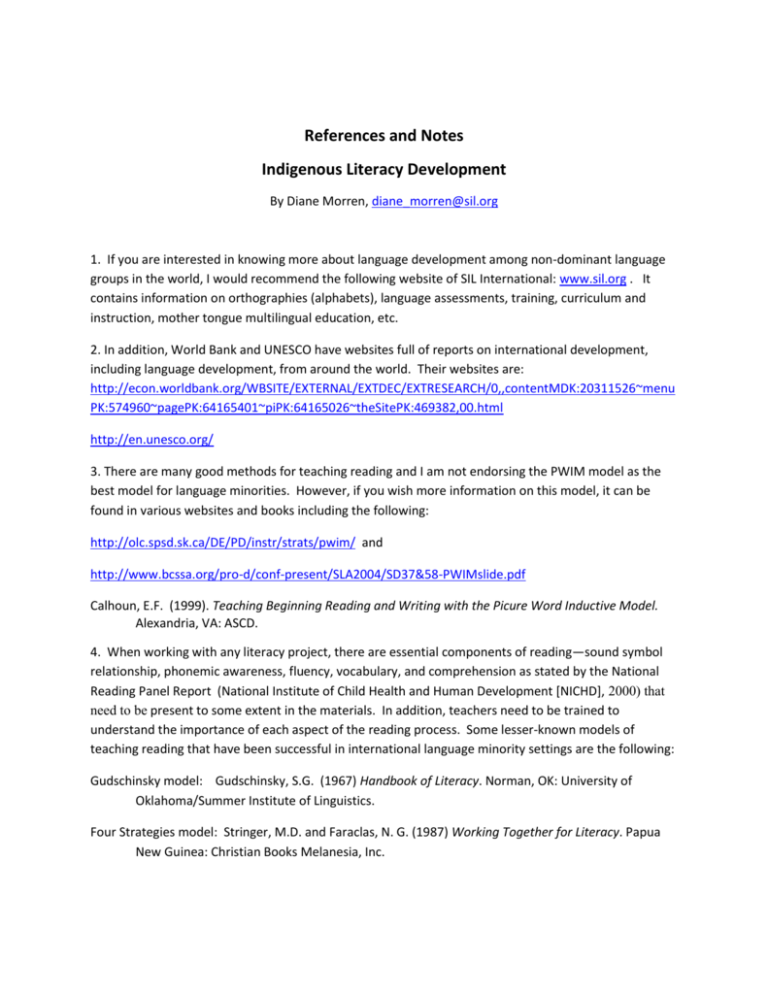
References and Notes Indigenous Literacy Development By Diane Morren, diane_morren@sil.org 1. If you are interested in knowing more about language development among non-dominant language groups in the world, I would recommend the following website of SIL International: www.sil.org . It contains information on orthographies (alphabets), language assessments, training, curriculum and instruction, mother tongue multilingual education, etc. 2. In addition, World Bank and UNESCO have websites full of reports on international development, including language development, from around the world. Their websites are: http://econ.worldbank.org/WBSITE/EXTERNAL/EXTDEC/EXTRESEARCH/0,,contentMDK:20311526~menu PK:574960~pagePK:64165401~piPK:64165026~theSitePK:469382,00.html http://en.unesco.org/ 3. There are many good methods for teaching reading and I am not endorsing the PWIM model as the best model for language minorities. However, if you wish more information on this model, it can be found in various websites and books including the following: http://olc.spsd.sk.ca/DE/PD/instr/strats/pwim/ and http://www.bcssa.org/pro-d/conf-present/SLA2004/SD37&58-PWIMslide.pdf Calhoun, E.F. (1999). Teaching Beginning Reading and Writing with the Picure Word Inductive Model. Alexandria, VA: ASCD. 4. When working with any literacy project, there are essential components of reading—sound symbol relationship, phonemic awareness, fluency, vocabulary, and comprehension as stated by the National Reading Panel Report (National Institute of Child Health and Human Development [NICHD], 2000) that need to be present to some extent in the materials. In addition, teachers need to be trained to understand the importance of each aspect of the reading process. Some lesser-known models of teaching reading that have been successful in international language minority settings are the following: Gudschinsky model: Gudschinsky, S.G. (1967) Handbook of Literacy. Norman, OK: University of Oklahoma/Summer Institute of Linguistics. Four Strategies model: Stringer, M.D. and Faraclas, N. G. (1987) Working Together for Literacy. Papua New Guinea: Christian Books Melanesia, Inc. 5. There are many good books written on multilingual/bilingual education but the ones I have listed below have an international perspective dealing with non-dominant language groups and international programs Baker, C. (2006). Foundations of Bilingual Education and Bilingualism (4th ed.). Clevedon, England: Multilingual Matters. Davis, P. (2004). Reading is for Knowing: Literacy Acquisition, Retention, and Usage among the Machiguenga. Dallas: SIL International. Larson, M. a. (Ed.). (1981). Bilingual Education: An Experience in Peruvian Amazonia. Dallas, TX: Summer Institute of Linguistics. Modiano, N. (1973) Indian Education in the Chiapas Highlands. NY: Holt, Rinehart and Winston, Inc. Skutnabb-Kangas, T. P. (2009). Social Justice through Multilingual Education. Briston, England: Multilingual Matters.
